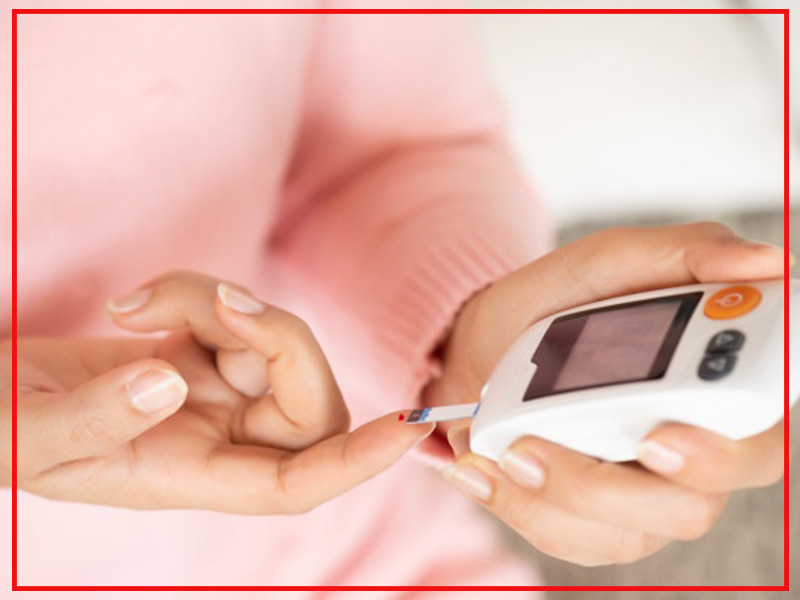
You might know that diabetes is a chronic disease characterised by high blood glucose level. However, do you know it isn’t just one condition and is of many types? The most common of them are type 1 and type 2 diabetes. Hence, if someone around you is suffering from this disease, it could be either type 1 or type 2 diabetes. But what is the difference between the two? To get an answer to this question, Onlymyhealth spoke to Dr Mudita Dhingra, who is a consultant pediatric endocrinologist and diabetologist at Radhakrishan Hospital, Kurukshetra.
Table of Content:-
But before we delve into the difference, let us first get to know about a hormone called insulin. We all know glucose fuels our bodies. However, insulin is responsible for making cells absorb glucose from the bloodstream. Insulin is produced by the pancreas, which releases this hormone based on the amount of glucose in the blood. Hence, a proper balance between insulin and blood glucose level is required. However, sometimes the body stops producing this hormone or doesn’t produce it in sufficient quantities. It leads to a spike in the blood sugar level, which marks the onset of diabetes.
Similarity Between Type 1 & Type 2 Diabetes

(Photo Credit: Freepik)
Before the difference, let us first understand the similarities between the two. As you already know that diabetes has many types, the most common being type 1 and 2. The common factor between the two is a high blood glucose level. No matter the diabetes type, long-term follow-ups are important to ensure good glycemic control and to monitor any complications, Dr Dhingra said.
Differences Between Type 1 & Type 2 Diabetes
The major difference between the two is insulin dependence.
Type 1 Diabetes
- This is also known as insulin-dependent diabetes.
- In this, the pancreatic beta cells stop producing the hormone insulin.
- This typically happens due to autoimmune destruction in which the body’s own immune system damages the beta cells.
- The only treatment is insulin, which is given throughout the patient’s life.
Type 2 Diabetes
- This is a more complex disorder, more common in obese adolescents and adults. Hereditary is another risk factor of this disease.
- Type 2 diabetes happens due to insulin resistance, which means that although the pancreas produces this hormone, the body is not able to use it properly.
Symptoms
Type 1 Diabetes
As you already know that this disease happens because of absolute insulin deficiency, hence the symptoms are also severe. The common symptoms are:
- Unexplained weight loss
- Frequent urination and even bedwetting
- Increased thirst and hunger
- In more severe cases, the patient breathes deeply and has abdominal pain. He/she can even experience loss of consciousness.
Type 2 Diabetes
This can be asymptomatic and might be detected during a regular health check-up, or due to frequent infections that don’t heal properly. A person with type 2 diabetes might also experience the following:
- An increase in cholesterol level
- Fatty liver
- Hypertension
- Thick and dark-coloured pigmentation on the neck and axilla, which is a sign of insulin resistance.
Both types of diabetes are diagnosed on the basis of blood glucose levels. If it is over 200 mg/dl with symptoms, it is diagnosed as diabetes. However, in the absence of any symptoms, fasting plasma glucose of over 126 mg/dl and post glucose load of over 200 mg/dl is diagnosed as diabetes.
Also read: Have Your Breakfast By 8.30 AM To Reduce Risk Of Diabetes, Study Says
Which One Is More Dangerous?

(Photo Credit: Freepik)
“Both the types of diabetes if not controlled adequately can give rise to early complications affecting eyes, kidneys, nerves, and heart,” Dr Dhingra said. Type 1 diabetes is diagnosed in children above the age of 1 till young adults. If controlled properly, the person can live up to 60-70 years.
Type 2 diabetes, on the other hand, progresses slowly and is generally detected coincidently during a health check-up. “But, there is a caveat,” said Dr Dhingra. Since type 2 diabetes is a lifestyle disease, it is often accompanied by other diseases like dyslipidemia, cardiovascular disorders, fatty liver, etc. Although this disease is initially managed with oral drugs, with time, insulin reserves decrease by 3-5% every year, making the patient insulin-deficient after a few years of diagnosis.
Treatment
As you already know that type 1 diabetes is managed with lifelong insulin treatment. On the other hand, the treatment for type 2 diabetes depends on the underlying symptoms and the severity of the disease. If the blood sugar level is too high during the diagnosis, along with severe symptoms like weight loss, or in the case of a limb or life-threatening situation, such patients are also candidates for insulin treatment. But generally, this form of diabetes is managed with oral drugs and lifestyle changes.
Also read: Study: Diabetes In Mothers Can Lead To Permanent Birth Defects In Fetus
Can One Type Of Diabetes Change Into Other?
“With the increasing cases of obesity across age groups, a child who is diagnosed to have type 1 diabetes may also develop insulin resistance due to the underlying obesity,” said Dr Dhingra. This is known as double diabetes or type 1.5 diabetes. On the other side, type 2 diabetes responds to oral drugs that facilitate insulin action. However, over time, beta-cell reserves in these patients decrease, and they might need insulin treatment in the long run.
(With inputs from Dr Mudita Dhingra, Consultant Pediatric Endocrinologist and Diabetologist at Radhakrishan Hospital, Kurukshetra)
Photo Credit: Freepik
Also watch this video
How we keep this article up to date:
We work with experts and keep a close eye on the latest in health and wellness. Whenever there is a new research or helpful information, we update our articles with accurate and useful advice.
Current Version